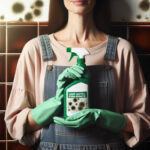Preventing Onychomycosis: Essential Strategies for Nail Fungus Control

Introduction to Onychomycosis Prevention
Defining Onychomycosis: Nail Fungus 101
Let’s break it down: onychomycosis is just a fancy term for nail fungus. It sneaks into the nail bed and plate, causing discoloration, thickening, and sometimes even pain in your fingernails or toenails. Most of us don’t notice it creeping up until our nails look really different. In everyday chatter, we just call it nail fungus, but getting to know the technical side of things can actually help you catch it early and fight back effectively. I’ve seen plenty of cases over the years, and trust me, early detection and a bit of diligent care go a long way.
The health of your nails isn’t just about looking good—it often signals how your overall health is doing. When you spot something off with your nails, it might be time to review your self-care routine. Noticing these little changes early on means you can take action before the fungus really gets a foothold, saving you a lot of hassle and frustration later.
The Impact of Onychomycosis on Nail Health
Nail fungus isn’t merely a cosmetic annoyance; it can really mess with the structure of your nails. The fungus can make your nails thick, brittle, or downright crumbly, and that can cause discomfort during everyday activities. This isn’t just about vanity—when your nails are in bad shape, even basic tasks like trimming them can turn into a challenge. My years of experience have shown that addressing this early is crucial for keeping your nails both strong and functional.
A loss of nail integrity isn’t just inconvenient—it can complicate everyday life. Overly thick, infected nails can turn simple grooming into a risky task, and if you have underlying issues like diabetes, the complications can multiply. Understanding how onychomycosis disturbs your nail health really underlines why it’s so important to nip it in the bud.
Why Preventing Onychomycosis Is Essential
Preventing nail fungus isn’t just about ensuring your nails look great for a manicure—it’s about maintaining long-term nail health. Taking early steps helps keep your nails robust and less likely to fall prey to invasive fungi. The tricky part is that the fungus loves to hide, especially if your nail care isn’t up to par, waiting for just a small lapse in hygiene. By being proactive, you can cut off its chances to spread and avoid the need for more intensive treatments down the road.
Experts agree: once the fungus settles in, treatment can become a drawn-out process with varying results. Whether you’re an athlete, a busy professional, or just someone who enjoys life, keeping your nails healthy should be an essential part of your overall wellness plan.
Understanding the Risk Factors of Onychomycosis
Common Causes Leading to Onychomycosis
More often than not, nail fungus starts where moisture and warmth meet—think swimming pools, gyms, and spas. These are places where proper hygiene might not always be a top priority, making your feet a perfect target. Even tiny injuries or small breaks in your nail can serve as an open invitation for the fungus. After years in the field, I've seen how these seemingly minor incidents can lead to major nail issues.
And it isn’t just about the environment; fungus can travel too. Contaminated footwear or shared nail tools provide easy passage for the infection to spread. Whether it’s in your home, on the sports field, or in a public shower, being aware of these common pitfalls can really help you stay one step ahead.
Environmental and Lifestyle Contributors to Onychomycosis
Your surroundings and daily habits play a huge role in your susceptibility to nail fungus. For example, high humidity, constant exposure to water, and non-breathable shoes create an inviting environment for the fungus to settle in. If you’re often wearing closed shoes during workouts or long days at the office, you might be increasing your risk without even realizing it. Skipping thorough drying after a shower? That can also contribute.
A few small adjustments—like alternating your shoes, ensuring your feet are dry, and letting them breathe whenever possible—can make a world of difference. These simple changes can help ward off an environment where the fungus loves to thrive.
Recognizing Early Warning Signs of Onychomycosis
The earlier you detect nail fungus, the better. Early signs can be as subtle as a slight discoloration, minor thickening, or a change in texture that might be mistaken for aging or a small injury. But overlooking these clues can allow the infection to burrow deeper, making it much tougher to kick out later.
Some people even mention a mild discomfort or a gritty feeling under the nail. What might seem trivial is actually a red flag. A consistent habit of checking your nails can serve as a simple, effective early warning system, keeping you ahead of any nasty surprises from onychomycosis.
Daily Habits to Minimize Onychomycosis Risk
Importance of Nail Hygiene in Preventing Onychomycosis
Keeping your nails clean is one of the easiest ways to fend off fungus. Regular washing, carefully drying, and proper trimming are all simple habits that block the fungus from settling in. After any exposure to moisture, a little extra cleaning can really lower your risk. And don’t forget—sanitize your nail tools too!
Making nail care a part of your daily routine can feel like a small ritual, but these small touches really add up over time. It’s all about those little extra minutes that keep the infection at bay.
Choosing the Right Footwear to Combat Onychomycosis
Believe it or not, your shoes play a big part in keeping nail fungus at a distance. Shoes that don’t let your feet breathe can trap moisture, creating the perfect breeding ground for fungus. That’s why choosing well-ventilated footwear is key, especially if you’re active or spend time in public gyms or pools.
It might sound simple, but opting for the right materials—like natural fiber socks and moisture-wicking shoes—can make a noticeable difference over time. Your feet (and nails) will thank you!






